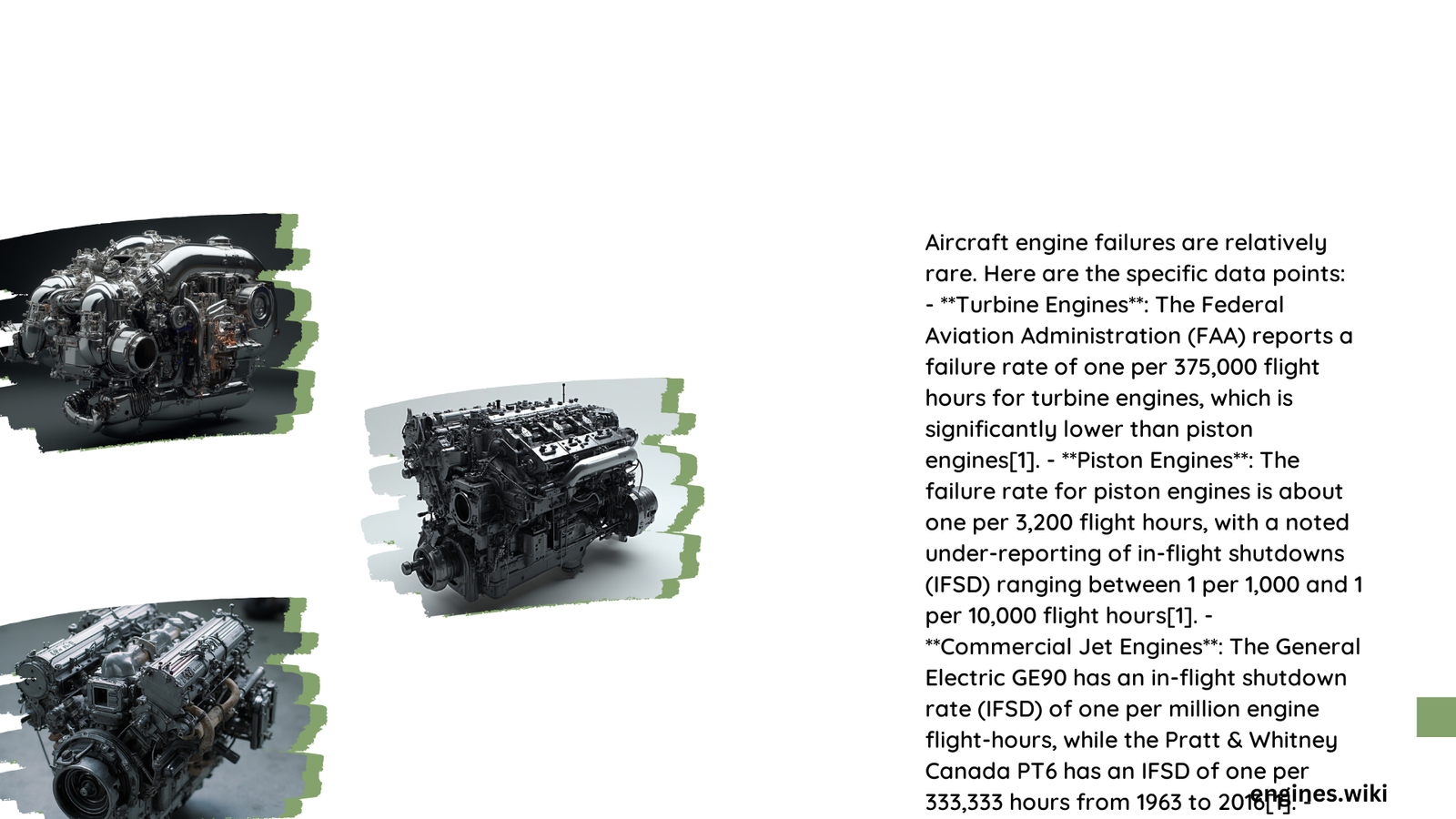Aircraft engine failures are remarkably rare in modern aviation, occurring approximately once in 375,000 flying hours. Despite technological complexities and operational challenges, commercial jet engines demonstrate exceptional reliability, with most failures preventable through rigorous maintenance, advanced monitoring systems, and proactive engineering interventions.
What Are the Actual Rates of Aircraft Engine Failures?
Modern commercial aviation has achieved unprecedented levels of engine reliability. The Federal Aviation Administration (FAA) reports that jet engine failures happen at an incredibly low rate of one incident per 375,000 flying hours – essentially translating to one potential failure every 44 years of continuous operation.
Statistical Breakdown of Engine Failures
| Aircraft Type | Failure Rate | Average Cycles Before First Overhaul |
|---|---|---|
| Narrow-body Aircraft | 1:250,000 | 12,000 flight cycles |
| Wide-body Aircraft | 1:375,000 | 20,000 flight cycles |
| Regional Jets | 1:150,000 | 8,000 flight cycles |
What Causes Most Aircraft Engine Failures?

Aircraft engine failures stem from multiple interconnected factors:
- Mechanical Stress Factors
- Extreme temperature variations
- High-pressure operational environments
-
Continuous mechanical vibrations
-
External Interference
- Bird strikes
- Foreign object damage
-
Severe weather conditions
-
Maintenance-Related Issues
- Inadequate inspection protocols
- Delayed component replacements
- Improper maintenance procedures
How Do Different Engine Manufacturers Compare?
Comparative Reliability Analysis
- Rolls-Royce Trent XWB: Experienced fuel nozzle reliability challenges
- Pratt & Whitney PW1100G: Required extensive powder metal inspections
- CFM International CFM56-7B: Demonstrated consistent performance across multiple platforms
What Preventive Measures Reduce Engine Failure Risks?
Aerospace engineers and maintenance professionals employ sophisticated strategies to minimize potential failures:
- Advanced Predictive Maintenance
- Real-time engine performance monitoring
- Sophisticated diagnostic algorithms
-
Proactive component replacement schedules
-
Rigorous Quality Control
- Comprehensive manufacturing inspections
- Strict material selection protocols
- Continuous engineering improvements
What Are the Economic Implications of Engine Failures?
Engine failures represent significant financial risks:
– Average engine replacement cost: $5-15 million
– Potential operational disruption expenses
– Potential passenger compensation
– Reputation damage for airlines
Technological Evolution in Engine Reliability
Modern aircraft engines incorporate cutting-edge technologies:
– Self-diagnostic systems
– Redundant mechanical fail-safes
– Advanced material engineering
– Machine learning predictive maintenance algorithms
Conclusion: Remarkable Safety Record
Aircraft engine reliability continues to improve, with technological advancements and rigorous maintenance protocols ensuring passenger safety remains paramount.
Key Takeaways
- Engine failures are extremely rare
- Modern technologies significantly reduce risks
- Continuous improvement defines aerospace engineering
